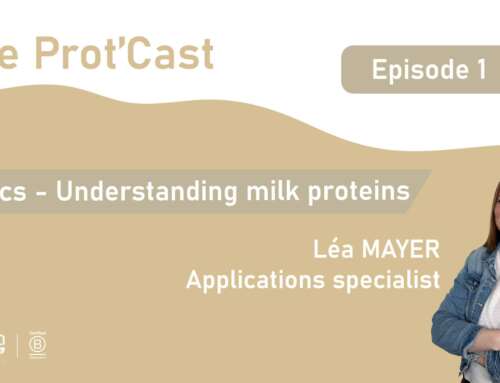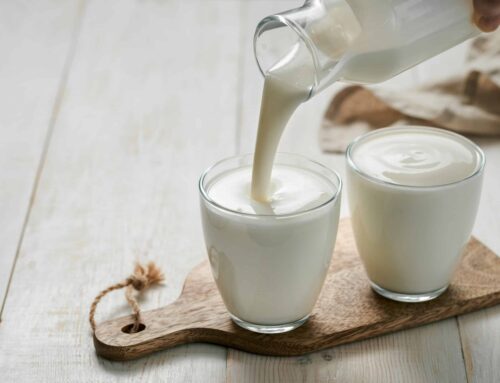After a tumultuous 2022, the dairy industry is still grappling with a range of complex issues in 2023. Fluctuating demand, changing consumer preferences, pressure from supply chain problems, staffing shortages, new technology and an unstable macroeconomic environment are all major concerns for dairy producers.
To stay competitive in the dairy sector in 2023, industry stakeholders will need to be more adaptive and innovative than ever before. This article provides an overview of the current trends in the global dairy industry for 2023 and beyond.
Current Consumer Trends in the Global Dairy Industry
Like any industry, trends in the global dairy industry are shaped by the demands of its customers. As we move through the second half of 2023, consumer preferences regarding milk, cheese and yoghurt products are increasingly shaped by ethical and environmental concerns and an increased focus on health and clean label food.
Increasing Demand for Alternative Dairy Products
There has been a major rise in the demand for plant-based and dairy-free products. This demand has been driven by consumers taking up vegetarianism and veganism. There has also been a sharp increase in the number of lactose-intolerant consumers. Additionally, health concerns and environmental concerns are driving the demand for alternative dairy products made from soy, almond, oat, or coconut.
A Focus on Ethical Practices and Animal Welfare
Consumers are becoming more concerned about the welfare of cows, sheep, and goats used in dairy production. Analysis shows that producers in both developing countries such as Africa and China as well as higher-income markets such as America and Europe will need to put in place more stringent animal welfare standards. It is expected that more countries will require labelling and certification to prove that animal welfare standards are being met.
Sustainability and Environmental Concerns
As well as concern regarding animal welfare, consumers are also increasingly focused on pushing dairy producers to be more environmentally responsible. Consumers are demanding that producers develop more sustainable production methods, waste management processes, water consumption, and packaging. Analysis by industry experts points to increased regulation and the need for environmental certification and labelling of products.
The Rise of Clean Label Products
In a recent analysis of global consumers, 74 per cent of respondents said that all-natural food was a major concern. The popularity of clean label food reflects consumer desire for food that does not have any additional additives. While this does not necessarily make the product any healthier, dairy producers must now be mindful of the need to list ingredients in a manner that is easily understood by consumers.
Higher Demand for Functional Products
Health-conscious consumers are driving market demand for dairy products that are enriched with added nutritional benefits. Producers are increasing the functionality of products past basic nutritional requirements. The focus is now on developing products with limited amounts of fat and added protein, probiotics, minerals, and vitamins.
Current Trends in Milk Production
As far as the production side of the business is concerned, dairy producers are going to need to be more tech-savvy. Emerging technologies are set to transform the global dairy industry. The emergence of artificial intelligence (AI) and the Industrial Internet of Things (IIOT) is driving the uptake of data-driven precision agricultural techniques.
Consumer demand and government regulations are driving the need for more sustainability and transparency within the dairy industry. Producers are going to have to adopt blockchain technology that provides a traceable and verifiable record of their supply chains.
Technology is also going to impact the production of dairy products in other ways. Advances in genomics and newly developed breeding technologies will enable producers to select and breed animals that have the most desirable traits, such as cows that can deliver maximum amounts of milk. Technology is also impacting how producers meet and enhance new food safety standards with advanced preservation techniques and improved microbial control.
What is Trending in Yoghurt in 2023
Yoghurt is fast becoming one of the most important sub-sectors of the dairy industry. Overall, yoghurt sales are on the rise in major markets such as America and China. As consumers turn to lactose-free or low-lactose products, the opportunities for whey-free or low-whey yoghurt producers will increase. As with traditional dairy products such as butter, cheese, and milk, yoghurt producers will need to focus on creating more functional products with clean labels.
The dessert market looks to be where the major growth in the yoghurt market is located. Nostalgia and enjoyment are major marketing factors. 25 per cent of young consumers in the United Kingdom say they eat yoghurt to make themselves feel better. 49 per cent of young consumers in America have a preference for yoghurt desserts that remind them of their childhood.
The popularity of healthy living and well-being is driving consumer demand for ready-to-drink protein products. Yoghurt producers are well placed to take advantage of the increased popularity of yoghurt products with added probiotics in America, Europe, Japan, India, and China.
Projected Demand for Dairy Products in 2023 and Beyond
Although there was an overall decline in the global consumption of dairy products such as cheese and butter in 2023, the news wasn’t all bad for producers. The consumption of yoghurt and cheese, especially in the American market and in China, is on the rise. Overall, the worldwide dairy food market increased from US $944.39 billion in 2022 to $1,018.35 billion in 2023, at the time of writing. Currently, the global dairy industry has a compound annual growth rate (CAGR) of 7.8 per cent. The worldwide market is forecast to grow at a CAGR of 6.9 per cent to reach US $1,329.15 billion by 2027. The rate of global milk production is expected to increase by 1.6 per cent per year until 2029.
The Asia-Pacific dairy market is forecast to grow at a CAGR of 3.12 per cent from 2023 to 2028. China is a prime driver of this growth as the consumption of dairy products has dramatically increased. Population growth in India and Indonesia is making these markets the fastest growing in the Asia-pacific region.
The European dairy market is forecast to grow at a CAGR of 1.4 per cent and reach a value of US 179.06 billion by 2028. The American dairy market was valued at US $96.48 billion at the time of writing and is forecast to grow at a CAGR of 3.38 per cent from 2023 to 2028. Domestic American consumption of dairy products is increasing, as are American dairy exports to Africa and the Middle East.
Current Challenges for the Dairy Industry
Dairy producers are faced with a range of difficult challenges in the coming years. The World Bank has predicted a slowdown in the global economy which will impact consumer purchasing power. Although the supply of milk has stabilised, milk prices are expected to remain volatile throughout 2023 and in the near future.
The war in Ukraine is pushing energy prices up and impacting the availability of fertilizer in key markets. Extreme weather conditions are driving up feed prices for dairy producers worldwide. The ongoing rate of inflation is pushing operating costs higher for producers at all levels of the industry. Other concerns for dairy producers include continued supply chain issues and labour shortages.
High added-value proteins such as Promilk® or Prodiet® could help improve recipes.
Sources
https://ifcndairy.org/the-dairy-world-in-2023/
https://research.rabobank.com/far/en/sectors/dairy/dairy-quarterly-q1-2023.html
https://www.techsciresearch.com/blog/trends-to-dominate-global-yogurt-market-in-2023/1346.html
https://store.mintel.com/report/the-future-of-yogurt-and-desserts-market-report
https://academic.oup.com/af/article/13/1/26/7052111
https://www.publish.csiro.au/AN/AN16680
https://fmcggurus.com/blog/fmcg-gurus-the-importance-of-clean-label-in-2023/
https://www.iowafarmbureau.com/Article/How-precision-agriculture-is-transforming-dairy-farming
https://www.statista.com/outlook/cmo/food/dairy-products-eggs/yogurt/worldwide
https://store.mintel.com/report/the-future-of-yogurt-and-desserts-market-report
https://finance.yahoo.com/news/dairy-food-global-market-report-145400823.html
https://www.statista.com/outlook/cmo/food/dairy-products-eggs/united-states


